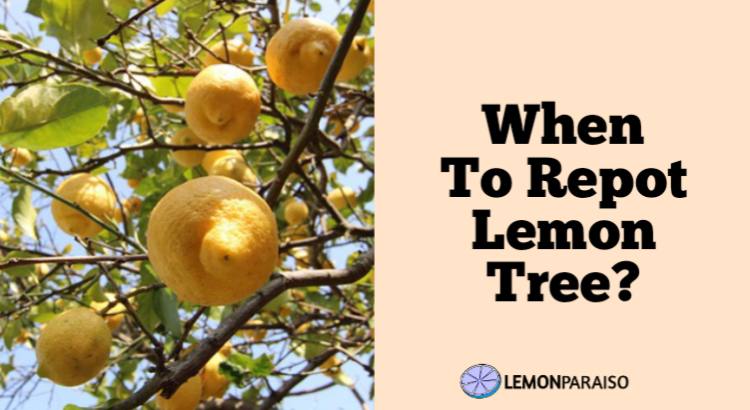Lemon Tree Leaves Turning Brown: Causes And Prevention

Lemon trees are prized for their vibrant green foliage and, of course, the tangy fruits they bear. However, the sight of lemon tree leaves turning brown can be disconcerting for any gardener or citrus enthusiast. Brown leaves not only compromise the aesthetic appeal of the tree but also signal potential issues that need addressing. In this comprehensive guide, we explore ten possible reasons behind this common problem and provide insights on how to revive your lemon tree to its lush, green glory.
Lemon Tree Leaves Turning Brown (Causes and Solutions)
1. Watering Woes
Overwatering or underwatering can both contribute to the browning of lemon tree leaves. Too much water can lead to root rot, while insufficient water can cause stress to the plant. Striking the right balance is crucial for the overall health of your lemon tree.
Inadequate drainage and waterlogged soil are common culprits behind overwatering. Ensure that your lemon tree is planted in well-draining soil and adjust your watering schedule based on the specific needs of your tree.
2. Nutrient Deficiency
Lemon trees require a balanced diet of essential nutrients, including nitrogen, phosphorus, and potassium. A deficiency in any of these nutrients can manifest as browning leaves. Conduct a soil test to identify nutrient imbalances and supplement accordingly.
Organic fertilizers formulated for citrus trees are readily available and can help address nutrient deficiencies. Ensure proper application rates and timings to provide your lemon tree with the nourishment it requires.
3. Pests and Pathogens
Insects and diseases can wreak havoc on lemon trees, causing leaves to turn brown. Aphids, mites, and fungal infections are common adversaries. Regularly inspect your tree for signs of infestation and take prompt action to mitigate the damage.
Natural remedies like neem oil or insecticidal soap can be effective against pests. For fungal issues, consider copper-based fungicides, but be cautious with application to prevent further stress to the tree.
4. Environmental Stress
Lemon trees are sensitive to changes in their environment. Exposure to extreme temperatures, strong winds, or sudden shifts in weather conditions can stress the plant and result in brown leaves. Consider protective measures during adverse weather to shield your lemon tree.
Providing adequate mulch around the base of the tree helps regulate soil temperature and moisture levels. Consider using shade cloth during scorching summers to protect your lemon tree from excessive heat.
5. Improper Pruning
Pruning is essential for shaping and maintaining the health of a lemon tree. However, improper pruning can lead to stress and browning of leaves. Ensure you follow correct pruning techniques and timings to avoid unnecessary harm to your tree.
Prune dead or damaged branches and thin out overcrowded areas. Aim for a balanced canopy to promote air circulation and sunlight penetration, preventing the development of fungal issues.
6. Mineral Buildup in Soil
Over time, minerals from water and fertilizers can accumulate in the soil, leading to toxicity. This can interfere with the absorption of nutrients and result in brown leaves. Regularly flush the soil to prevent mineral buildup and maintain a healthy root environment.
Use rainwater when possible, and occasionally irrigate with excess water to leach out accumulated minerals. Monitoring the pH of the soil is also crucial for preventing mineral-related issues.
7. Disease Resistance
Lemon trees vary in their resistance to certain diseases. Ensure you choose disease-resistant lemon varieties to minimize the risk of infections. If your tree is susceptible, implement preventive measures to safeguard against common citrus diseases.
Practicing good sanitation by removing fallen leaves and debris, and applying appropriate fungicides can help prevent the onset of diseases. Regularly inspect your tree for early signs of infections.
8. Root Issues
Root-related problems, such as root rot or damage, can impair the overall health of a lemon tree. Brown leaves may indicate that the roots are not functioning optimally. Inspect the root system and take corrective action as needed.
Improve soil drainage to prevent root rot and avoid damaging the roots during transplanting or other activities. Consider applying root-promoting substances to enhance the vitality of the root system.
9. Chemical Exposure
Exposure to harsh chemicals, including herbicides or pesticides, can lead to leaf discoloration. Be cautious when using chemical products in the vicinity of your lemon tree and follow recommended application guidelines.
If chemical exposure is suspected, thoroughly flush the soil with water to dilute any residues. Consider organic alternatives to minimize the impact on your lemon tree’s health.
10. Age of the Leaves
It’s natural for older leaves to turn brown and drop as new growth emerges. This process is part of the tree’s natural life cycle and doesn’t necessarily indicate a problem. However, if brown leaves are predominantly affecting new growth, it’s essential to investigate potential issues.
Ensure your lemon tree receives adequate care and nutrients to support the development of new leaves. Regularly monitor the health of the foliage and address any concerns promptly.
In conclusion, diagnosing the reason behind lemon tree leaves turning brown requires careful observation and consideration of various factors. By addressing the specific issues affecting your tree, you can revive its health and ensure a bountiful harvest of luscious lemons.



